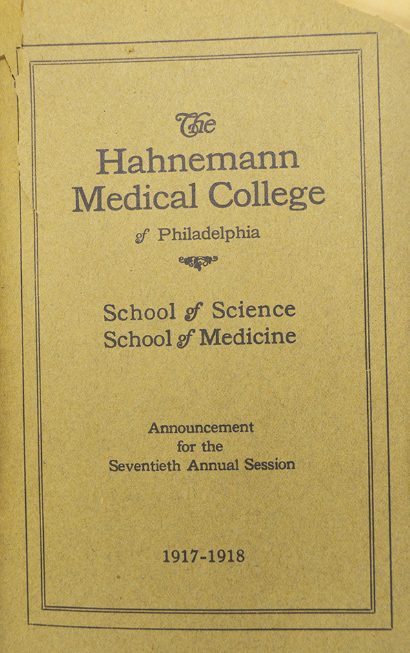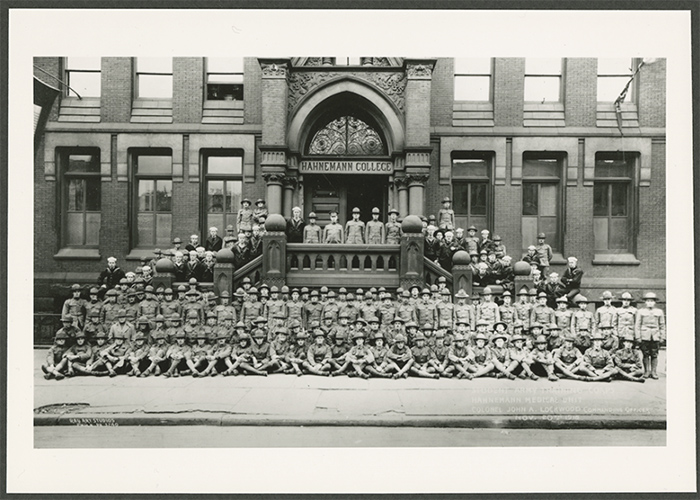Hahnemann Medical College in World War I
When the United States entered World War I in April of 1917, the country found itself with a shortage of physicians, as many joined the Medical Corps as commissioned officers or were drafted into service. Even with this shortage, however, the Pennsylvania State Bureau of Medical Education and Licensure did not change the requirements of medical education. It seems that medical students were exempt from the draft so that they could complete their education and training without interruption.
Hahnemann Medical College supported the Bureau's decision and urged its students to complete their courses of study, including hospital training. The College formed the Students' Army Training Corps in October of 1918, but the corps was disbanded in December after the armistice was signed on November 11.
Hahnemann graduates – homeopathic physicians – were welcomed as commissioned officers, although the Hahnemann Hospital Unit was not recognized by the Red Cross. In 1917, the American Institute of Homeopathy convinced the Council of National Defense to include two homeopathic physicians. One of these physicians was William van Lennep, an 1880 graduate and Professor of Surgery. Approximately 300 Hahnemann students and nearly a third of the faculty served during World War I.

Cover of Hahnemann Medical College Annual Announcement, 1917-1918

First page of Hahnemann Medical College Annual Announcement, 1917-1918
 Student Army Training Corps, Hahnemann Medical Unit, 1918
Student Army Training Corps, Hahnemann Medical Unit, 1918
Back to Top